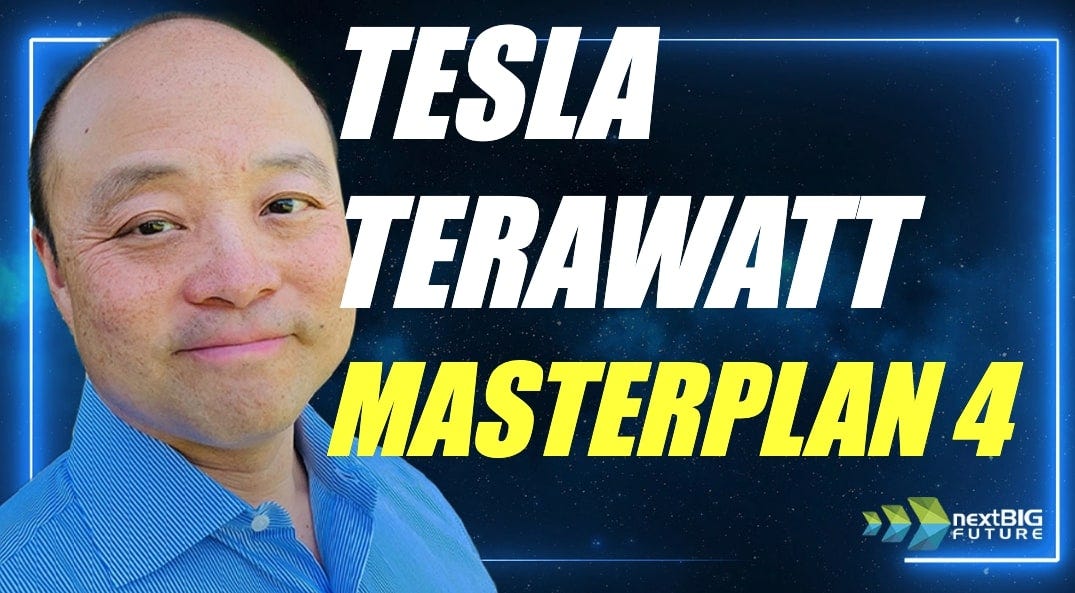Tesla Master plan 3 targeted a global installation of 30 terawatts (TW) of renewable energy capacity, primarily from solar and wind. This is a monumental scale-up aimed at meeting all energy needs across electricity, transportation, and heating. It involved extensive Battery Storage: It proposes 240 terawatt-hours (TWh) of battery storage worldwide to ensure consistent energy supply, addressing the intermittency of renewables like solar and wind.
A Tesla Terawatt plan is a more focused XAI and Tesla Master Plan 4. It would be doubling the electricity generation of the USA for the purpose of powering a monster AI data center. The Terawatt goal is a smaller but still huge energy goal but it also involves scaling up AI chip production and AI memory production and AI data centers by about 100 times.
If this was attempted with 1000 nuclear reactors it would mean ten times more nuclear reactors than the US has now and about 20 times more than China has now. Cooling those nuclear reactors would need 7 million tons of water each minute. It would be a literal major river of water.
One billion chip AI data center would be a stepping stone to one trillion chips.
XAI is completing a one million chip AI data center in the next 12 months.
The Terawatt goal is a smaller but still huge energy goal but it also involves scaling up AI chip production and AI memory production and AI data centers by about 100 times.
Tesla Master Plan 3
For the United States, the plan includes approximately 3 TW of solar, 1.9 TW of wind, and 6.5 TWh of battery storage, tailored to meet the nation’s energy demands sustainably.
Tesla estimated a global investment of $10 trillion, which is less than the $14 trillion projected for fossil fuel spending over the next two decades, making it economically viable. It also ensures material availability for this transition.
Doubling US Electricity but All for XAI and Tesla Data Centers
The U.S. currently generates approximately 4,243 TWh of electricity annually (based on 2022 data). Doubling this to 8,486 TWh per year would require a significant increase in generation capacity—roughly doubling the existing ~1,200 GW of installed capacity to ~2,400 GW, assuming current utilization rates.
Keep reading with a 7-day free trial
Subscribe to next BIG future to keep reading this post and get 7 days of free access to the full post archives.




